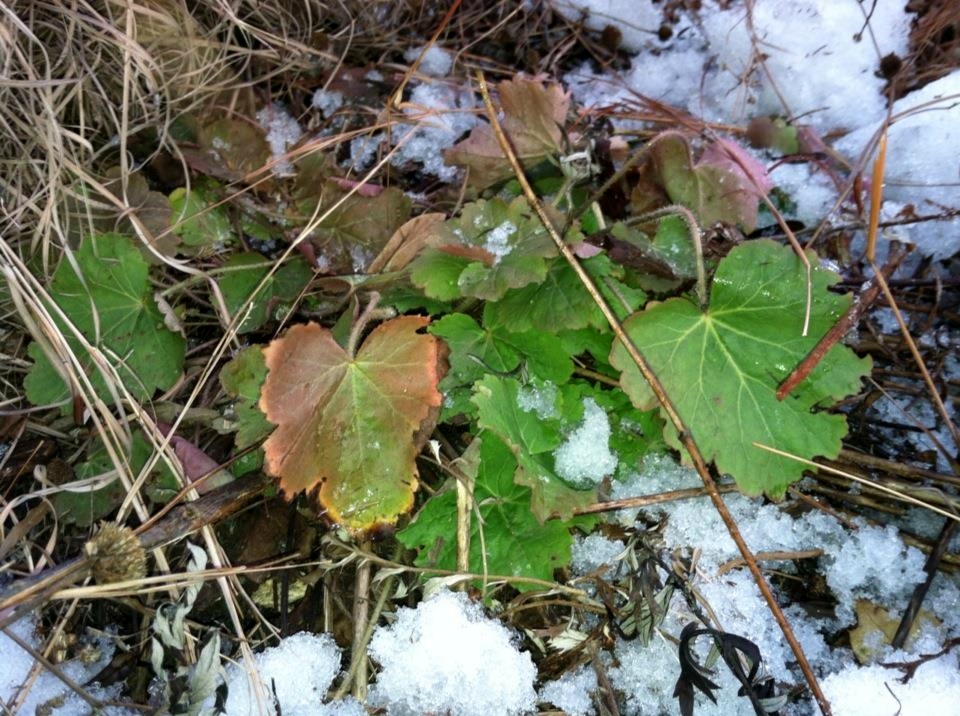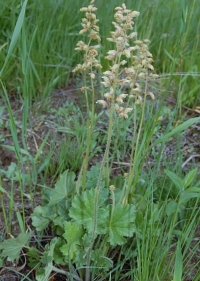Description
Prairie Alumroot is a low growing plant which forms a one foot tall mound-like rosette of evergreen leaves. Each leaf is 3-5 inches wide and long, has a hairy upper and lower surface, and is roughly heart shaped with 5 shallow lobes and fine teeth on its margins. The leaves are held up by 6-12 inch hairy leaf stalks (petioles) which attach directly to the plant's central stems. The stems never grow more than an inch tall and are attached to a very fibrous root system. The leaves remain over winter, turning orange or reddish brown in the fall and reverting to green in the following spring. The flowering stems (inflorescences) reach a peak height of two to three feet in June and produce small 1/8 inch yellow-green flowers.

Although they are evergreen, Prairie Alumroot's leaves don't actually photosynthesize over most of the winter. The physics of photosynthesis can happen at temperatures below freezing but the chemistry cannot. It takes an extended period of above freezing weather for temperate evergreen plants to alter the gene expression in their leaves and stems to start their photosynthetic machinery working again. If a winter thaw is long enough evergreen plants may resume capturing solar energy and storing it as food. The primary advantage of evergreen leaves is that they give plants a two month head start on photosythesis in the spring and then a two month extension in the fall.
Range
H. richardsonii is distributed almost exclusively within what was historically the prairie and savanna region of North America. Its range forms a triangle from Michigan down to Oklahoma, back up to Montana and all the states in between as well as southern Canada.
Habitat/Cultivation
Prairie alumroot is found in prairies, savannas, and woodlands where it prefers to grow in mesic to dry conditions. It often grows on slopes or in poor, rocky soil where competition from taller plants is reduced. In cultivation it can grow in a variety of soils (including rich soil) as long as they are well drained. Prairie alumroot grows best in full sun or partial shade and cannot tolerate deep shade.
Wildlife Value
Native bees feed on nectar and pollen from this plant. It has not yet been documented which other animals feed on the leaves, roots, and seeds.
Cultural Value
Some Native American tribes used various species of Heuchera to treat a variety of digestive ailments.
Conservation Status
The population of Prairie Alumroot is considered stable. Nevertheless, the three main habitats in which it grows, prairie, savanna, and fire adapted woodland are now very rare with the first two listed as endangered ecosystems.





